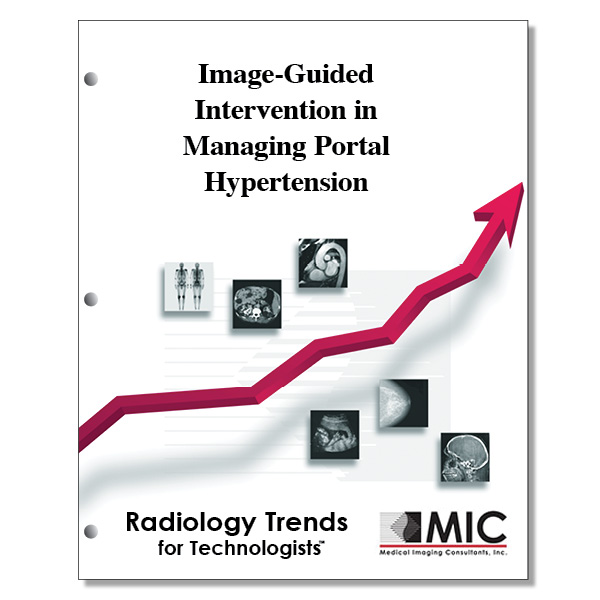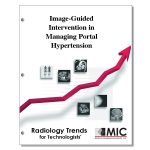

Image-Guided Intervention in Managing Portal Hypertension
Alternatives are presented to transjugular intrahepatic portosystemic shunt placement.
Course ID: Q00405 Category: Radiology Trends for Technologists Modality: Vascular Interventional4.5 |
Satisfaction Guarantee |
$39.00
- Targeted CE
- Outline
- Objectives
Targeted CE per ARRT’s Discipline, Category, and Subcategory classification for enrollments starting after April 6, 2023:
[Note: Discipline-specific Targeted CE credits may be less than the total Category A credits approved for this course.]
Computed Tomography: 2.00
Procedures: 2.00
Abdomen and Pelvis: 2.00
Registered Radiologist Assistant: 4.50
Procedures: 4.50
Neurological, Vascular, and Lymphatic Sections: 4.50
Vascular-Interventional Radiography: 4.50
Procedures: 4.50
Vascular Interventional Procedures: 4.50
Outline
- Introduction
- Portal Hypertension
- Portosystemic Collateral Vessels
- Interventions in Portal Hypertension
- Selection of Procedure and Access
- TIPS: Indications, Limitations, and Challenges
- Recanalization of the Hepatic Vein
- Recanalization of the Portal Vein and Its Tributaries
- Embolization of APF
- Partial Splenic Embolization
- Percutaneous Transhepatic Variceal Embolization
- BRTO of Varices
- Ectopic Varices: Percutaneous Access and Sclerotherapy
- Surgical Shunts
- Peritoneovenous Shunt
- Conclusion
Objectives
Upon completion of this course, students will:
- define portal hypertension
- define portal pressure gradient
- list the classifications of portal hypertension
- understand the cause of intra-hepatic portal hypertension
- list the sites for ectopic varices
- know the number of common portosystemic venous collateral pathways
- list the consequences of portal hypertension
- define ascites
- discuss the primary goal in treating portal hypertension
- list the medications to treat portal hypertension
- identify the grades of esophageal varices
- classify the fluid types related to portal hypertension
- list considerations for treatment of patients with portal hypertension
- summarize the common access routes for portal venous system intervention
- understand the risks associated with transhepatic access to the portal venous system
- describe TIPS placement location
- list the indications for TIPS placement
- associate MELD score with mortality rates for TIPS patients
- differentiate between absolute and relative contraindications for TIPS placement
- understand TIPS access routes in patients with challenging vascular anatomy
- know the causes of Budd-Chiari syndrome
- define DIPS
- list the methods used to recanalize the hepatic vein or IVC
- know the success rate in the Li et al study regarding recanalization of the hepatic vein
- list the symptoms of extrahepatic obstruction of the portal vein
- distinguish the segments of the liver
- differentiate the caudate lobe of the liver from other liver segments
- list the symptoms of arterio-portal fistulas
- classify arterio-portal fistulas
- understand the purpose of partial splenic embolization
- know how splenic embolization can affect risk
- summarize the effective use of PTE
- understand the use and choice of coils for PTE
- describe how fundal and fundal-cardiac varices drain
- list the risks to balloon rupture during BRTO
- differentiate between all classes of gastric varices
- explain the studies related to gastric variceal classification
- know the advantages of BRTO over TIPS placement
- recognize the percentage of portal hypertension patients that develop stomal varices
- recognize the main presentation of stomal varices
- list the types of portosystemic shunt placement procedures
- describe the placement of a portocaval shunt
- recall the possible dysfunctions associated with portosystemic shunts
- define serial paracentesis
- list the complications associated with peritoneovenous shunt placement
